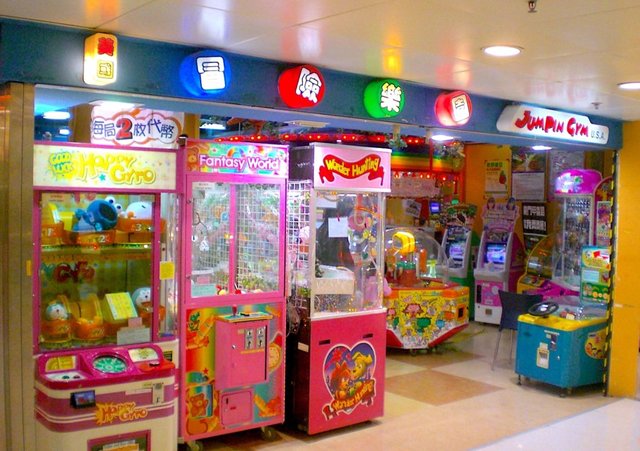CryptoMyths #2: What Is Backing Crypto Tokens?
Coins. Tokens.
Last time we thrust these 2 basic concepts in the crypto world into the limelight. Yet, people in the real world seldom adopt those bases to make their decisions on investing the blockchain projects with coins and tokens(both referred to native tokens), but only chasing the speculations.
Admittedly, only understanding how to define a native token doesn’t exactly help you much on making profitable investments in crypto projects. So, what else should we consider?
“Purchasing a token equals buying a certain right in a specific application.”
No one would deny the first step to analyse a traditional financial instrument, no matter equities, debts or funds, is to evaluate the feasibility, longevity, and explosivity of your favored company/project’s business model. At least we imagine they can make profits! However, when it comes to utility token offerings of decentralized application(dAPP) projects, it is another world. The investors who acquire the projects’ utility tokens are not eligible to share their profit earned. Consequently, we shouldn’t directly slip our analytical strategy on financial instruments into those unregulated tokens offerings(i.e. initial coin offering, initial token offering, etc.) or secondary trading.
“What is a token? What are we investing?”
Get back to the basic. Token is the fundamental concept describing the transaction unit on the blockchain. Bitcoin transferred on the bitcoin network should be called “Bitcoin token”. Ideally, the token should be deemed as a certificate of equity in the digital form which represents a right and an intrinsic value. But at the moment, most of existing tokens on various blockchain infrastructures do not function as an asset-backed transaction unit, but simply serve as a capital funding and utility tool granting access to certain network facilities. Investors should understand what the project owners distribute based on their subscription is only utility token. However, in reality, they’re not just supporting a decentralized application coded by developers, but funding a real company behind.
For infrastructure projects, people are supporting the team to develop better infrastructure. For example, in many white papers of infrastructure projects, the team is addressing the current problems with Bitcoin, in most cases – scalability. But the value of the coin is still lying on the number of people using it as a payment method. This is difficult to analyse the profitability of the infrastructure projects because they are purely decentralized. So, for analysing the infrastructure projects, people will look into the characteristics of the projects, in Ethereum’s case is allowing the developer to write smart contract. The reason for BItcoin’s price increase is people believed that Bitcoin as a payment method applied to distributed ledger was valuable. Investors in Ethereum believes that smart contract execution in blockchain is important for changing the business execution.
In the cryptomania previously, people had a fever of the possibility that applying blockchain into different applications could change the world. Therefore, there were many initial coin offering activities attracting whose people devoting their money wholeheartedly for changing the world. But, what were they investing?
Let’s illustrate the situation with gaming tokens in entertainment stores. Jumpin Gym U.S.A. is a renowned entertainment center in Hong Kong attracting all walks of life to enjoy and relax in an indoor playground. People need to purchase physical tokens in stores, insert them into the entertainment machines, and play every gaming facility inside. When people buy Jumpin Gym’s tokens, they normally do not expect there is an investment gain by acquiring the tokens. It seems like a utility token, isn’t it?

“People are investing in utility but not profitability.”
Investing in the decentralized application tokens is to invest in the potential demand for the utility of the token but not the profitability of the applications. Since utility tokens in decentralized applications mean the right granted for enjoying certain functionalities within the applications, investors who invest in the utility tokens are actually having a positive expectation for the demand for the right of using the applications’ special functionalities. For example, an investor invested in a token of a decentralized E-commerce platform. In most cases, this kind of E-commerce platform allows users to settle their transaction by using these token and sometimes allowing the sellers to pay advertisement fee using such token. If buyers settle the transaction using the tokens, the number of tokens required depends on the market price of the tokens. That means both the sellers and buyers are exposed to the fluctuation of the token price in exchange for fiat. Therefore, if the E-commerce platform becomes popular and started making profits, token holders may not earn anything if all transactions are settled in cash or credit cards. If the platform doesn’t accept the traditional payment method, this would be much more difficult for people to have the intention to use. In this case, the holders of the token can earn money only if there are many people buying the token to spend on the network.
Thanks to a high level of regulatory requirements, the projects have to circumvent the securities features of their tokens. That’s why most projects seem not having an actual relationship with the profitability of the networks themselves. In terms of the Howey Test, it means they are trying to escape the “other people’s effort” principle. BlockImpact will explore this problem in future articles by suggesting that investors who are still very keen on investing dAPP projects may simply ask the following questions.

For whether the tokens have the possibility to price up.
- Who will use the token?
- How many tokens will be issued?
- How long will it take to use up all the token issued?
- How many people know these projects?
- How the applications’ design?
For the projects’ prospect.
- Why does this need to be decentralized?
- Compare to a similar project which is centralized, what is the difference? Why this decentralized project is better than it?
- Why allowing the public having access to the transaction data is better than holding this in a centralized database?
The problem with the stagnant price is that most of the token design is only selling the future service in the decentralized applications. This is something like buying a cash coupon allowing people to enjoy service in the future. Investors can only make profits when people need the service in the network.
Protocols which built on a blockchain share the same problem. The only difference is protocol can facilitate a more fundamental blockchain use that the possible use cases will be more than that of decentralized applications.
What the founders can get are basically from two aspects. First is the salary which is included in the angel and seed funding stage. Second is the token after the lock-up period. This is difficult to persuade people that the founders can be incentivised after they sold all the tokens.
So, does it mean that the decentralized applications developers developed useless applications to scam people? We believe that there are indeed many projects which are scammy. However, we still believe that the fundamental reason for people to develop decentralization is to improve people’s livelihood. The problem is mainly the token design which is restricted by the regulations. We believe that after different jurisdictions develop better regulation frameworks for token offering, those tokens in projects can share a certain degree of security features may incentivise both the investors to hold valuable projects and the developers to develop the projects.
Congratulations @blockimpact! You received a personal award!
You can view your badges on your Steem Board and compare to others on the Steem Ranking
Vote for @Steemitboard as a witness to get one more award and increased upvotes!